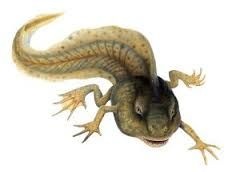The tadpoles of a paradoxical frog can be almost four times larger than the
frog itself.
The paradoxical frog is a South American frog also known as the
“shrinking frog” because of the enormous size of its tadpoles compared
with the adult frog. The tadpoles can reach more than eight inches in
length, while the adult frogs are generally only two inches long.
In the tropical lowlands of the Amazon rainforest, some of the frogs are shrinking. No cause for alarm, though. This isn’t the work of deforestation, mining runoff or even witch doctors. These frogs are Pseudis paradoxa, or paradox frogs, and they don’t so much grow up as grow down.
When biologists first discovered the species, they were thoroughly confused. The juvenile, tadpole forms of the frog were two to four times larger than the adult forms. They initially thought that the smaller, fully-developed frogs were the juveniles, and that they grew and morphed into the larger tadpoles as they matured, completely breaking away from the way that every other frog on the planet develops. But they soon figured out that the tadpoles are indeed the babies, and that the frogs just start off super big (some of the tadpoles can be a whopping 11 inches), and shrink as they get older.
Fortunately for paradox frog mothers, they don't give live birth, so the enormous offspring aren’t gut busters. Instead, after mating, the female lays normal-sized eggs which hatch into tadpoles that grow continuously over the next four months before turning into froglets. As they go from tadpole to froglet to frog, they lose their tails, which makes up most of the tadpoles’ impressive length. Once that shrinks away, the froglet is much smaller. The end result, a “fully grown” adult paradox frog, is around 2.5?3 inches, a pretty standard size for tropical frogs.



